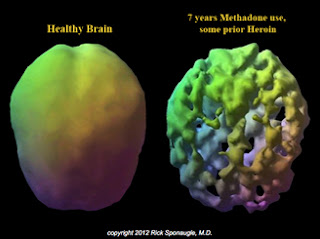Chris Christie Compares AIDS/HIV And Drug Addiction Epidemics
The New Jersey governor wants drug abuse to be treated like a public health crisis and not a condition that is shamed and stigmatized.
What do the HIV/AIDS crisis of the '80s and '90s and the current “opioid epidemic” have in common? According to New Jersey Governor Chris Christie—a lot.
“Think about what the response of America was in 1995. We had the National Institutes of Health and every private pharmaceutical company with the government’s support struggling to get treatments—not cures—to extend the lives of people who suffered from HIV and AIDS,” the governor said this past Wednesday during a press conference in Toms River.
“I don’t get, feel, the same sense of urgency in this country about this problem.”
While Christie is not the first to compare the two public health crises, his message is a good reminder of how destructive it is to debase and shame another, based on harmful stereotypes.
“People considered AIDS, if you remember, at the beginning of the AIDS epidemic as something people did to themselves,” Christie continued. “We have the same feeling today about drug abuse—if you never tried it in the first place you wouldn’t have these problems. We rejected that approach with HIV/AIDS and we need today to reject that approach on the treatment of drug abuse.”
In a 2014 essay by Gwendolyn Barnhart, MS, for World Aids Day, “HIV/AIDS” is easily interchangeable with “substance use disorder.”
“There are many people who believe that HIV/AIDS will not affect them, especially when they do not have the disease themselves and they do not know of anyone who has the disease,” wrote Barnhart in her essay that appeared on the website of the American Psychological Association.
Another example: “When persons with HIV/AIDS speak out and share their stories, it helps to humanize the magnitude of the epidemic.”
These days, a new generation of people with substance use disorders are ditching the shame of the disease and are “coming out” of the shadows.
The portrait series, Faces of Addiction, by photographer Chris Arnade, is putting faces and stories to addiction. Arnade, who spoke with The Fix about his project, documents people of all backgrounds who struggle with problematic drug use.
Generation Heroin, by the Palm Beach Post, is another project that’s putting faces and names to the opioid epidemic. The project documents the stories of 216 people who died of opioid overdose in Palm Beach County in 2015. The intention is to “humanize the epidemic,” but some of the families of the deceased are not happy about the project.
“It’s easy to hate the unknown,” a law student told The Washington Post in a 2015 report. The man, in his 30s, was once homeless and addicted in his teens and spent almost three years in federal prison for selling cocaine.
“So long as we keep ourselves in the shadows, we will remain in the shadows,” he said.
Original story found at:
https://www.thefix.com/chris-christie-compares-aidshiv-and-drug-addiction-epidemics




Comments
Post a Comment